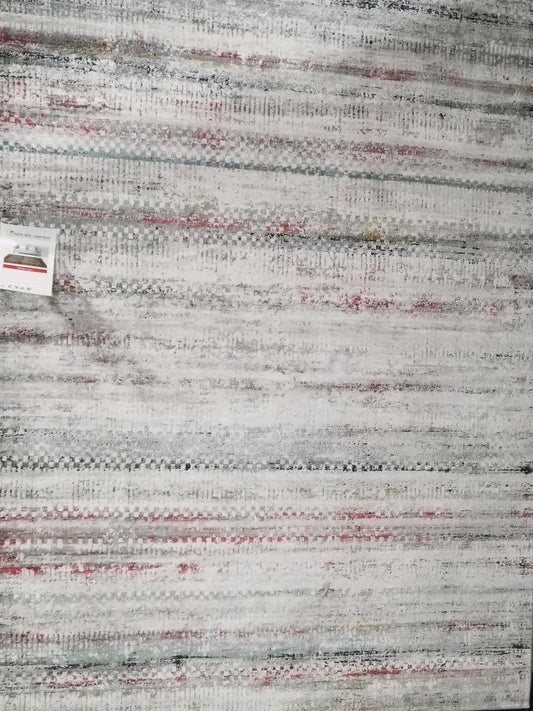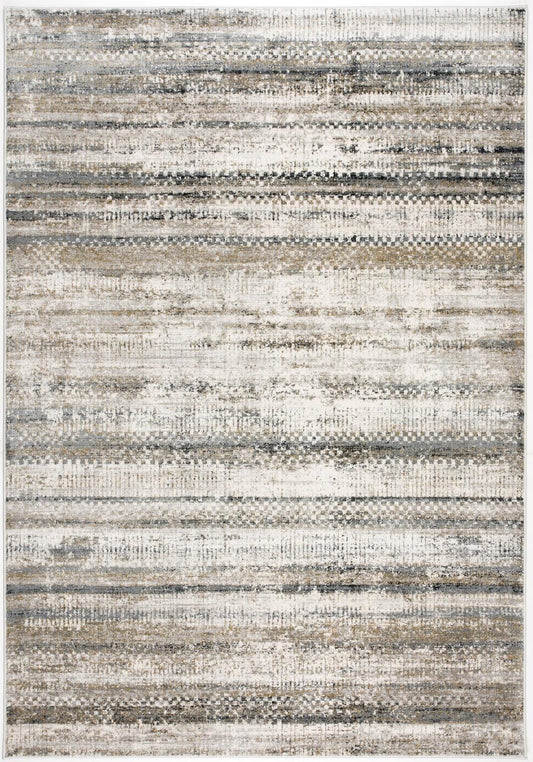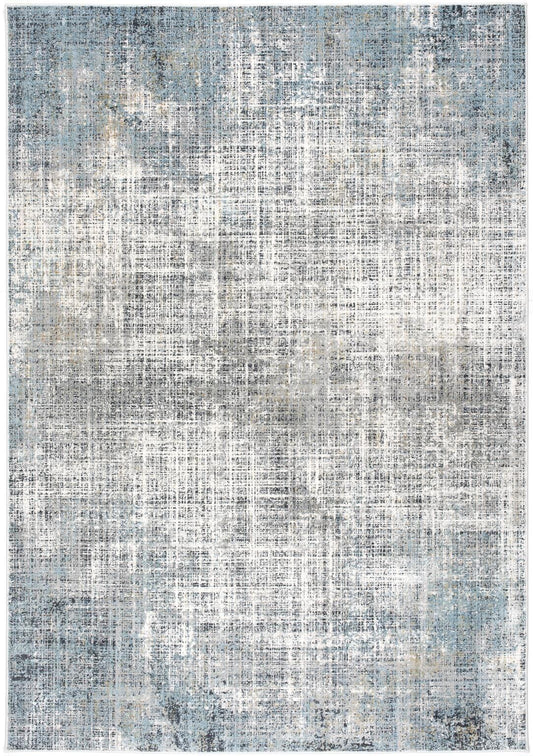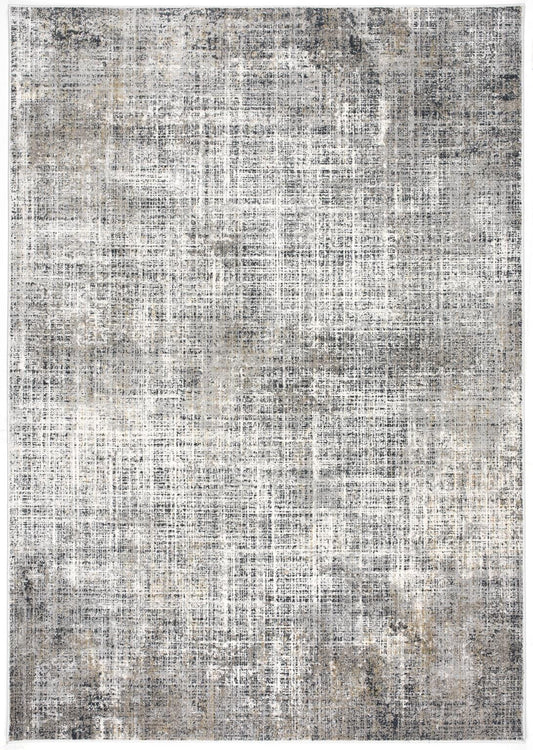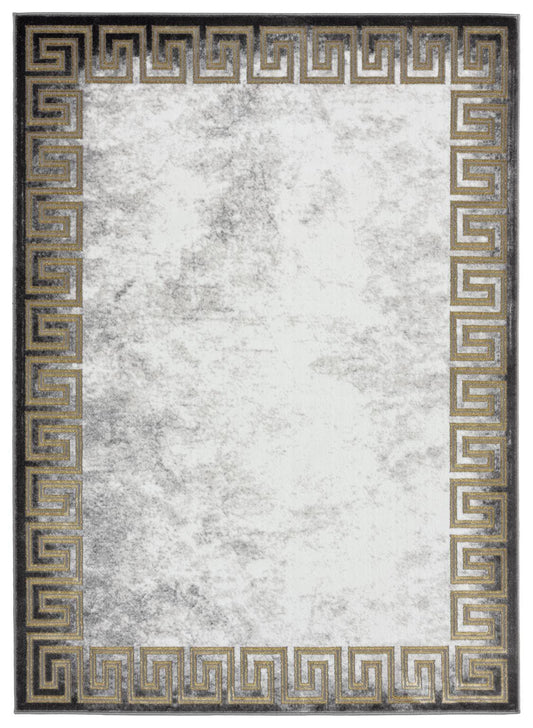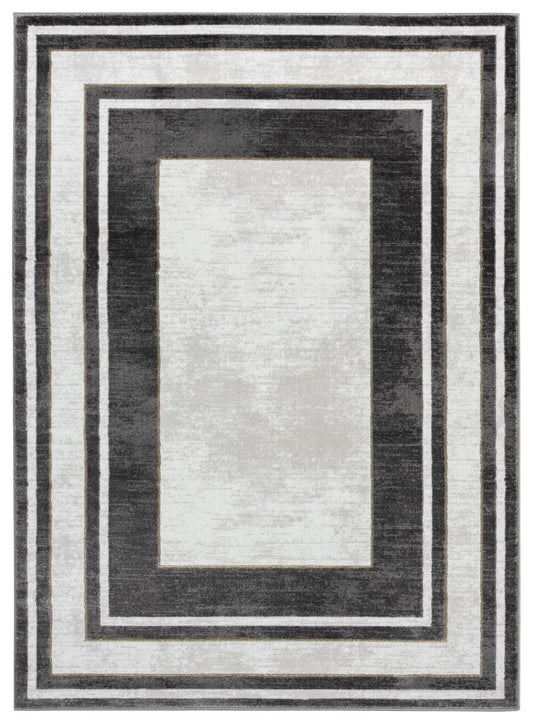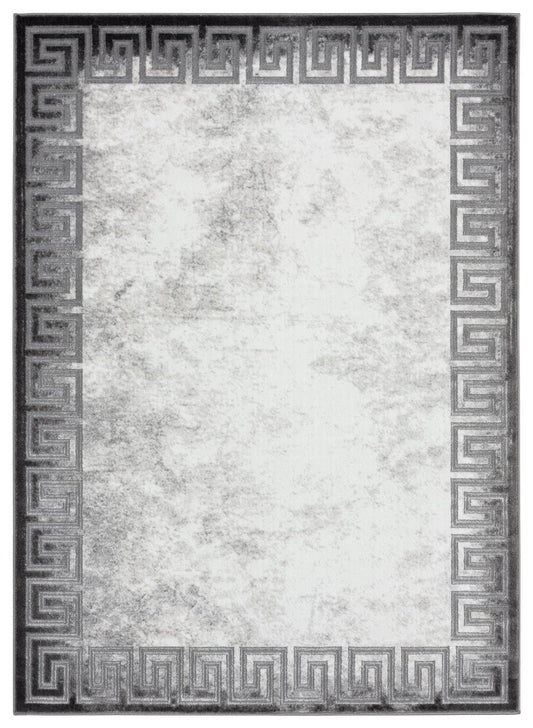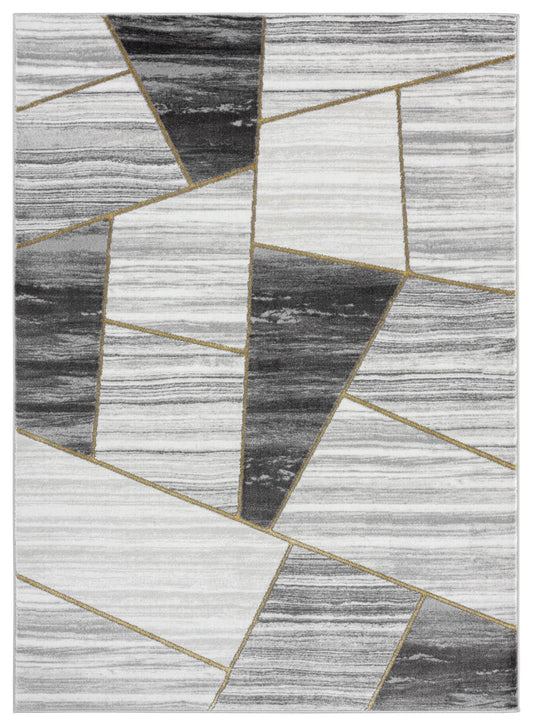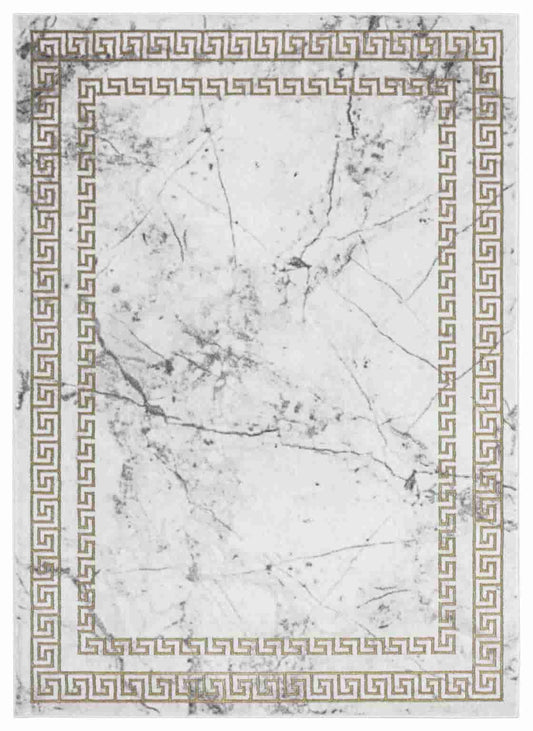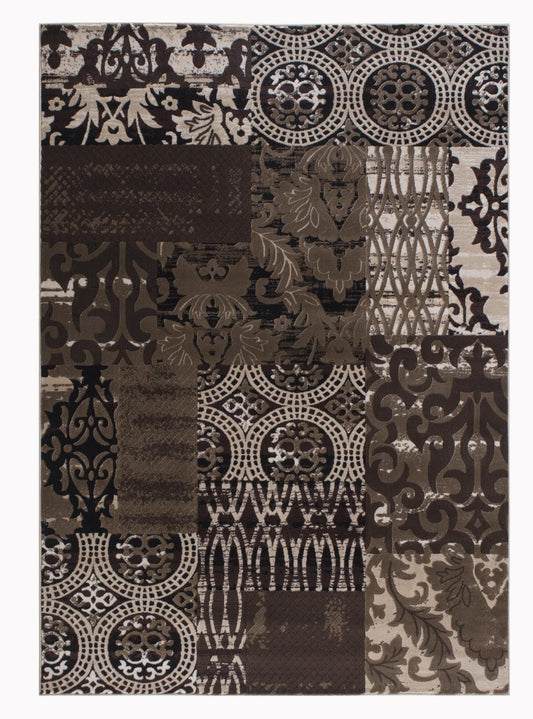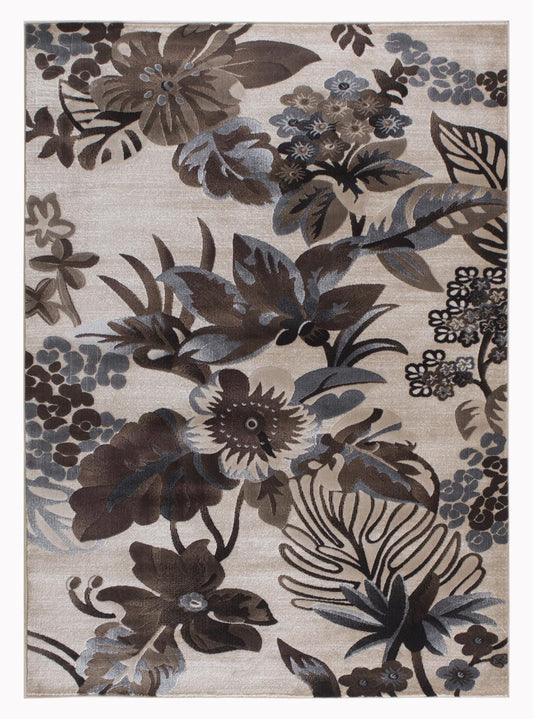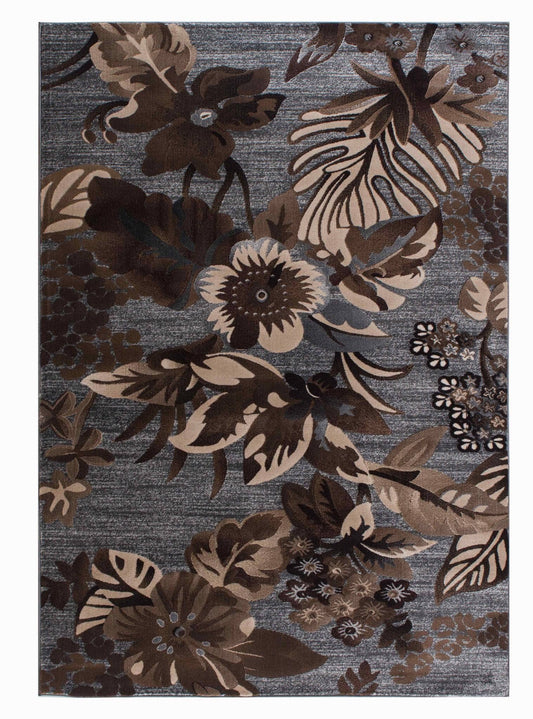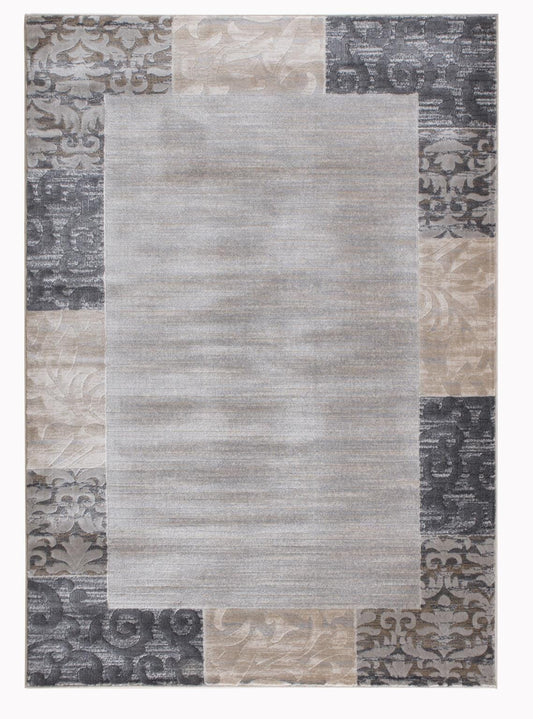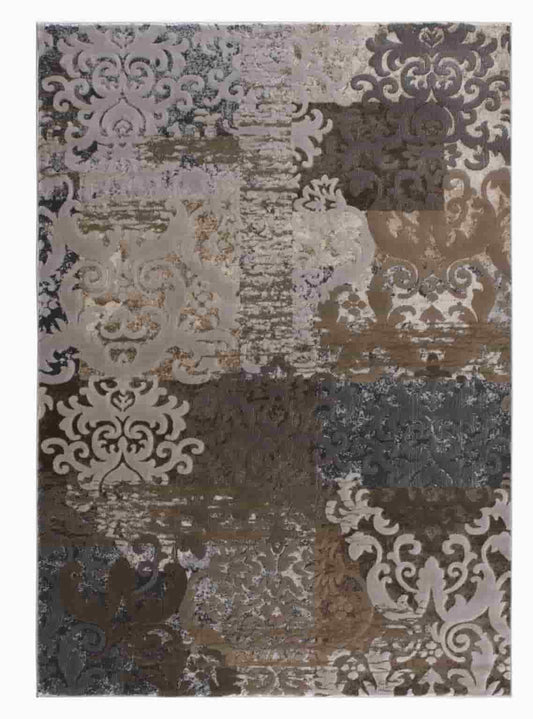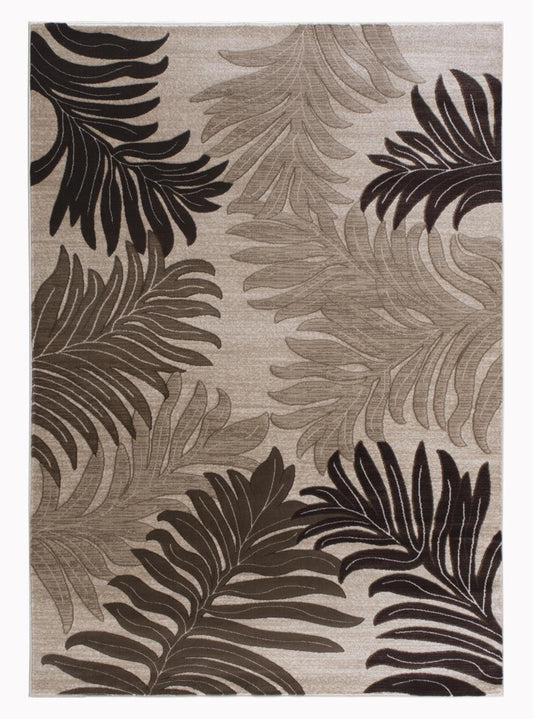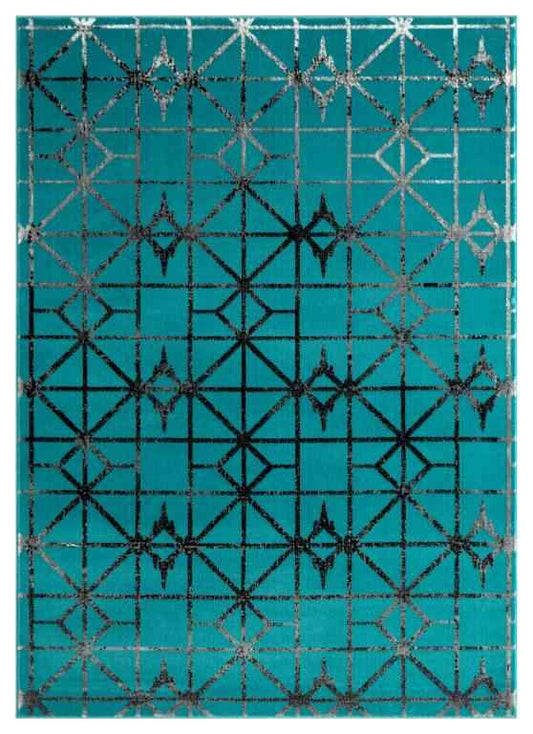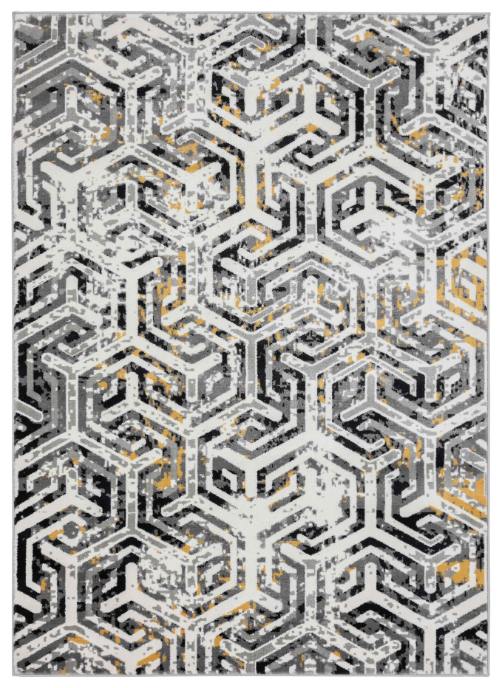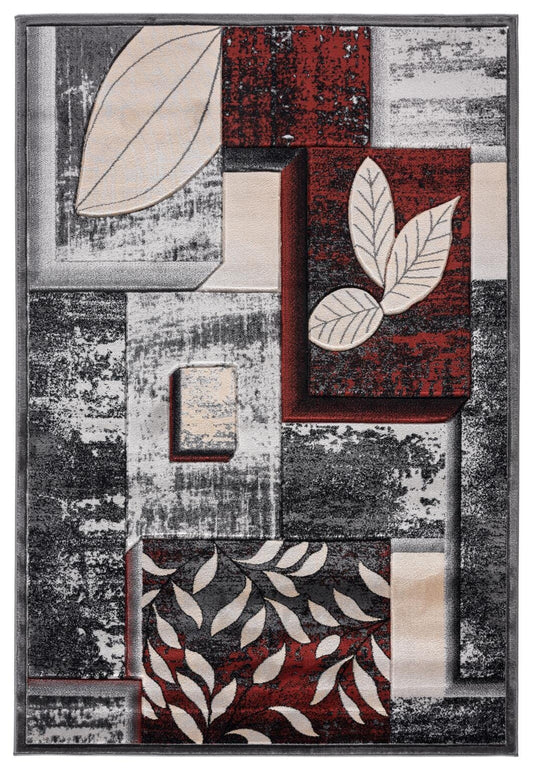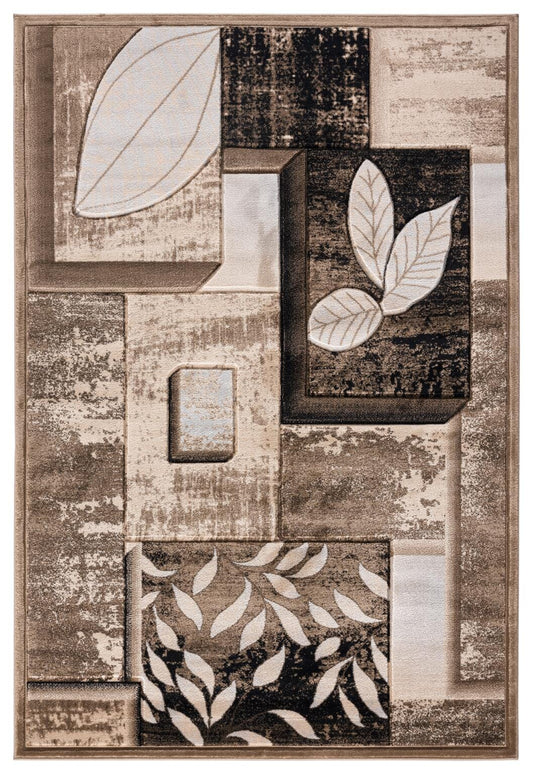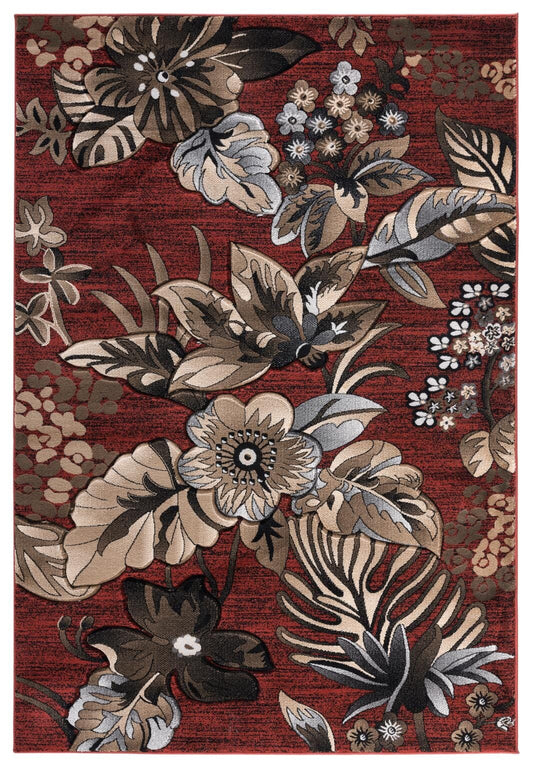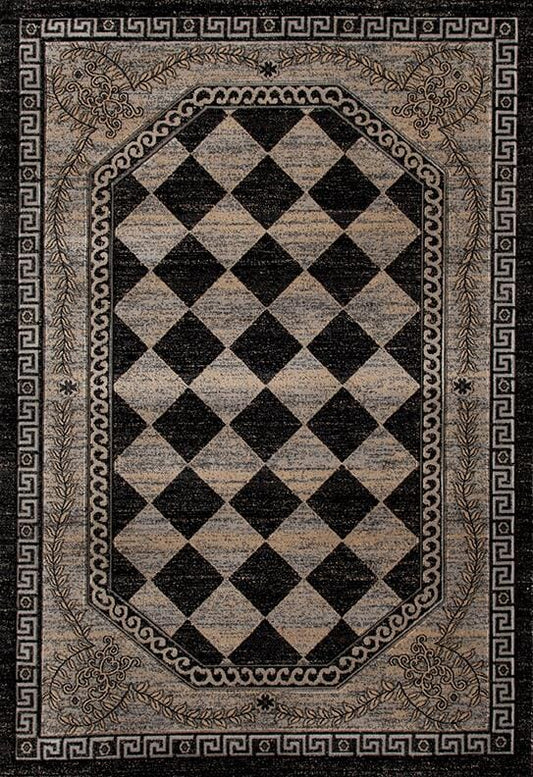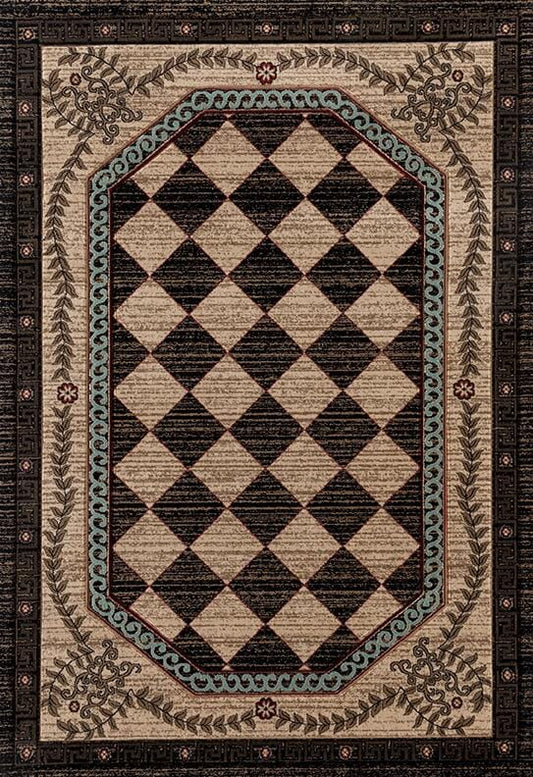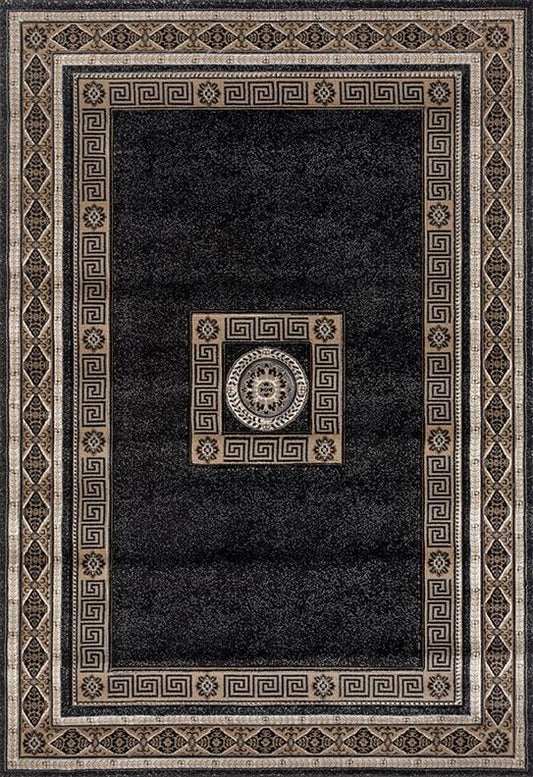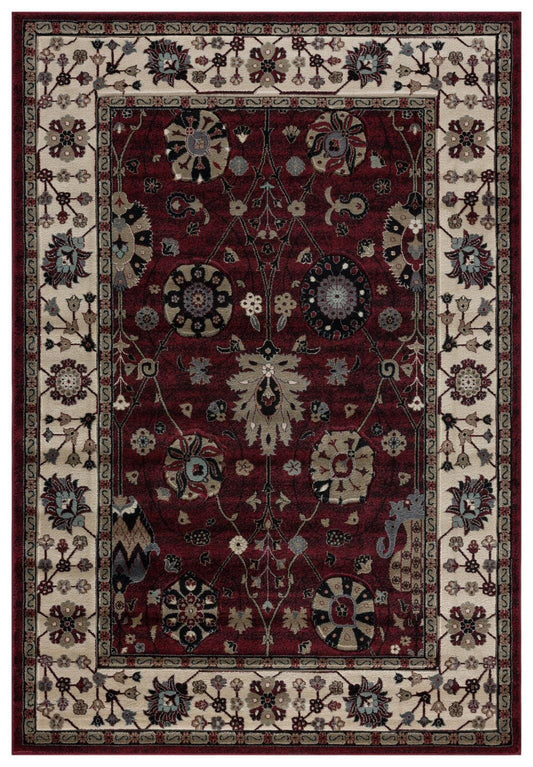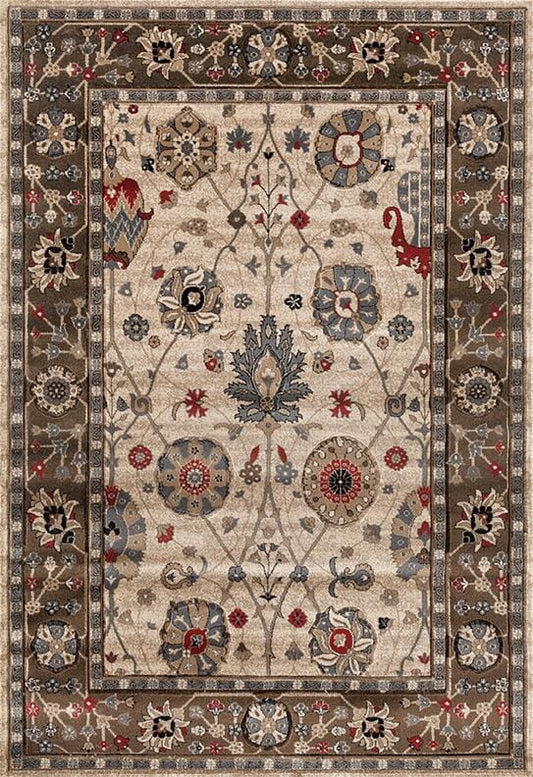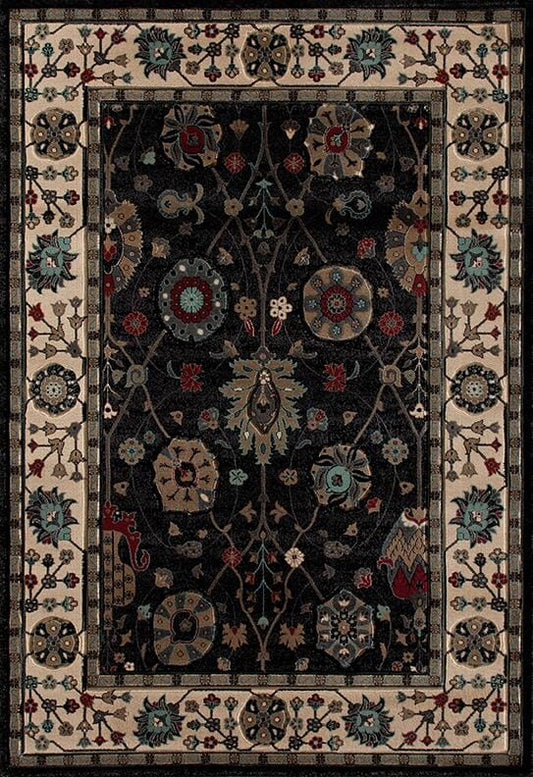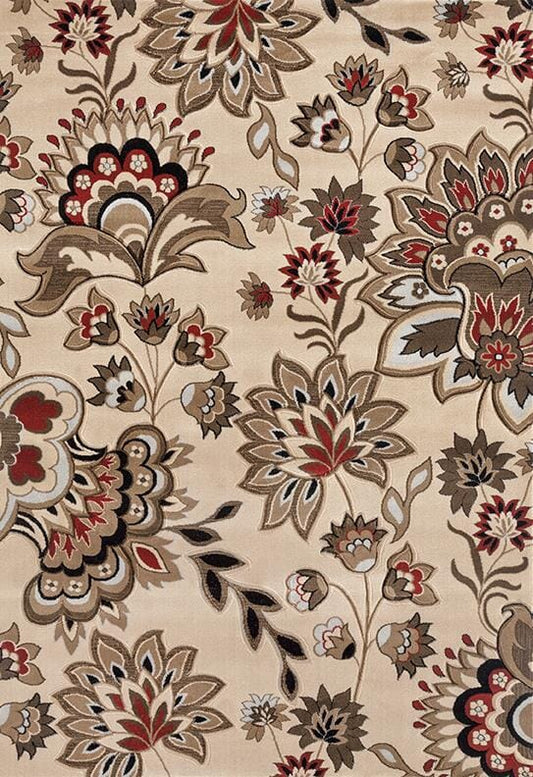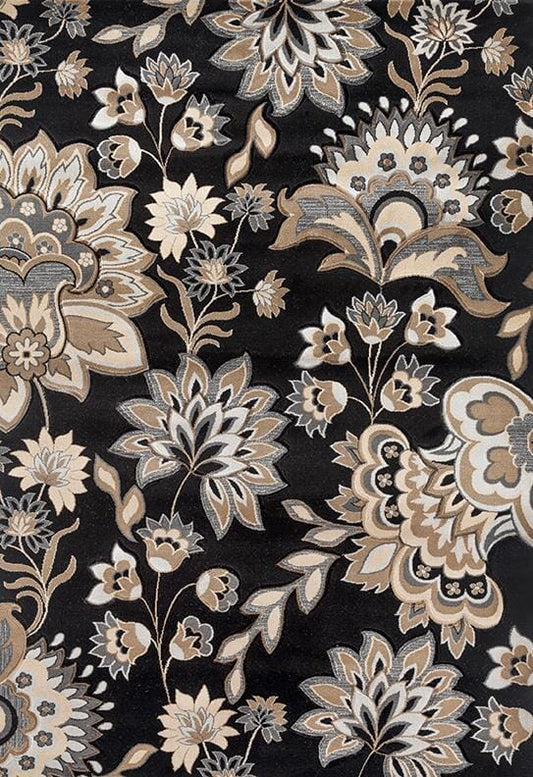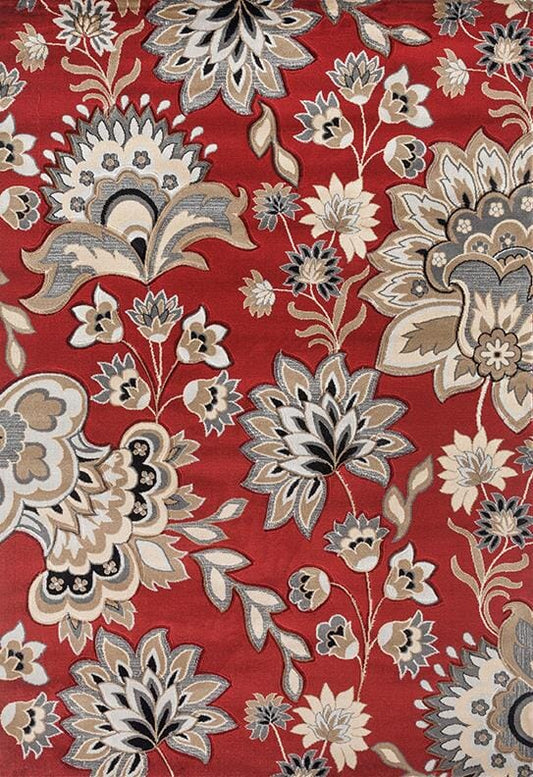-
CHRISTIAN CY04 Rug - GrayAttribute Value Product Name: CHRISTIAN CY04 Area Rug Collection Name: CHRISTIAN COLLECTION Rug Style TRANSITIONAL Color: GRAY Construction: Machine Made Key Features: 25% SHRINK POLYESTER 75% VISCOSE Product Sizes Guide Group Size Actual Size 2x3 2'1" x 3'3" 2x12 2'8" x 11'10" 2x8 Runner 2'8" x 8'1" 3x5 2'8" x...
- Regular price
- From $159.00
- Regular price
-
- Sale price
- From $159.00
- Unit price
- per
Liquid syntax error (snippets/product-attribute line 6): Expected end_of_string but found colon in "{{settings.product_attribute_text | replace: '[option]' : product_attribute_option }}" -
CHRISTIAN CY03 Rug - GrayAttribute Value Product Name: CHRISTIAN CY03 Area Rug Collection Name: CHRISTIAN COLLECTION Rug Style TRANSITIONAL Color: GRAY Construction: Machine Made Key Features: 25% SHRINK POLYESTER 75% VISCOSE Product Sizes Guide Group Size Actual Size 2x3 2'1" x 3'3" 2x12 2'8" x 11'10" 2x8 Runner 2'8" x 8'1" 3x5 2'8" x...
- Regular price
- From $159.00
- Regular price
-
- Sale price
- From $159.00
- Unit price
- per
Liquid syntax error (snippets/product-attribute line 6): Expected end_of_string but found colon in "{{settings.product_attribute_text | replace: '[option]' : product_attribute_option }}" -
CHRISTIAN CY02 Rug - GrayAttribute Value Product Name: CHRISTIAN CY02 Area Rug Collection Name: CHRISTIAN COLLECTION Rug Style TRANSITIONAL Color: GRAY Construction: Machine Made Key Features: 25% SHRINK POLYESTER 75% VISCOSE Product Sizes Guide Group Size Actual Size 2x3 2'1" x 3'3" 2x12 2'8" x 11'10" 2x8 Runner 2'8" x 8'1" 3x5 2'8" x...
- Regular price
- From $159.00
- Regular price
-
- Sale price
- From $159.00
- Unit price
- per
Liquid syntax error (snippets/product-attribute line 6): Expected end_of_string but found colon in "{{settings.product_attribute_text | replace: '[option]' : product_attribute_option }}" -
CHRISTIAN CY01 Rug - GrayAttribute Value Product Name: CHRISTIAN CY01 Area Rug Collection Name: CHRISTIAN COLLECTION Rug Style TRANSITIONAL Color: GRAY Construction: Machine Made Key Features: 25% SHRINK POLYESTER 75% VISCOSE Product Sizes Guide Group Size Actual Size 2x3 2'1" x 3'3" 2x12 2'8" x 11'10" 2x8 Runner 2'8" x 8'1" 3x5 2'8" x...
- Regular price
- From $159.00
- Regular price
-
- Sale price
- From $159.00
- Unit price
- per
Liquid syntax error (snippets/product-attribute line 6): Expected end_of_string but found colon in "{{settings.product_attribute_text | replace: '[option]' : product_attribute_option }}" -
BROOKLYN 05 Rug - GrayAttribute Value Product Name: BROOKLYN BK05 Area Rug Collection Name: BROOKLYN COLLECTION Rug Style CONTEMPORARY Color: GRAY Construction: Machine Made Key Features: 100% Polypropylene Product Sizes Guide Group Size Actual Size 2x3 2'1" x 3'3" 2x12 2'8" x 11'10" 2x8 Runner 2'8" x 8'1" 3x5 2'8" x 4 3x10 2'8"...
- Regular price
- From $129.00
- Regular price
-
$415.00 - Sale price
- From $129.00
- Unit price
- per
Liquid syntax error (snippets/product-attribute line 6): Expected end_of_string but found colon in "{{settings.product_attribute_text | replace: '[option]' : product_attribute_option }}" -
BROOKLYN 04 Rug - GrayAttribute Value Product Name: BROOKLYN BK04 Area Rug Collection Name: BROOKLYN COLLECTION Rug Style CONTEMPORARY Color: GRAY Construction: Machine Made Key Features: 100% Polypropylene Product Sizes Guide Group Size Actual Size 2x3 2'1" x 3'3" 2x12 2'8" x 11'10" 2x8 Runner 2'8" x 8'1" 3x5 2'8" x 4 3x10 2'8"...
- Regular price
- From $129.00
- Regular price
-
$415.00 - Sale price
- From $129.00
- Unit price
- per
Liquid syntax error (snippets/product-attribute line 6): Expected end_of_string but found colon in "{{settings.product_attribute_text | replace: '[option]' : product_attribute_option }}" -
BROOKLYN 06 Rug - GrayAttribute Value Product Name: BROOKLYN BK06 Area Rug Collection Name: BROOKLYN COLLECTION Rug Style CONTEMPORARY Color: GRAY Construction: Machine Made Key Features: 100% Polypropylene Product Sizes Guide Group Size Actual Size 2x3 2'1" x 3'3" 2x12 2'8" x 11'10" 2x8 Runner 2'8" x 8'1" 3x5 2'8" x 4 3x10 2'8"...
- Regular price
- From $129.00
- Regular price
-
$415.00 - Sale price
- From $129.00
- Unit price
- per
Liquid syntax error (snippets/product-attribute line 6): Expected end_of_string but found colon in "{{settings.product_attribute_text | replace: '[option]' : product_attribute_option }}" -
BROOKLYN 03 Rug - BlackAttribute Value Product Name: BROOKLYN BK03 Area Rug Collection Name: BROOKLYN COLLECTION Rug Style CONTEMPORARY Color: BLACK Construction: Machine Made Key Features: 100% Polypropylene Product Sizes Guide Group Size Actual Size 2x3 2'1" x 3'3" 2x12 2'8" x 11'10" 2x8 Runner 2'8" x 8'1" 3x5 2'8" x 4 3x10 2'8"...
- Regular price
- From $129.00
- Regular price
-
$415.00 - Sale price
- From $129.00
- Unit price
- per
Liquid syntax error (snippets/product-attribute line 6): Expected end_of_string but found colon in "{{settings.product_attribute_text | replace: '[option]' : product_attribute_option }}" -
BROOKLYN 01 Rug - GrayAttribute Value Product Name: BROOKLYN BK01 Area Rug Collection Name: BROOKLYN COLLECTION Rug Style CONTEMPORARY Color: GRAY Construction: Machine Made Key Features: 100% Polypropylene Product Sizes Guide Group Size Actual Size 2x3 2'1" x 3'3" 2x12 2'8" x 11'10" 2x8 Runner 2'8" x 8'1" 3x5 2'8" x 4 3x10 2'8"...
- Regular price
- From $129.00
- Regular price
-
$415.00 - Sale price
- From $129.00
- Unit price
- per
Liquid syntax error (snippets/product-attribute line 6): Expected end_of_string but found colon in "{{settings.product_attribute_text | replace: '[option]' : product_attribute_option }}" -
BROOKLYN 02 Rug - GrayAttribute Value Product Name: BROOKLYN BK02 Area Rug Collection Name: BROOKLYN COLLECTION Rug Style CONTEMPORARY Color: CREAM Construction: Machine Made Key Features: 100% Polypropylene Product Sizes Guide Group Size Actual Size 2x3 2'1" x 3'3" 2x12 2'8" x 11'10" 2x8 Runner 2'8" x 8'1" 3x5 2'8" x 4 3x10 2'8"...
- Regular price
- From $129.00
- Regular price
-
$415.00 - Sale price
- From $129.00
- Unit price
- per
Liquid syntax error (snippets/product-attribute line 6): Expected end_of_string but found colon in "{{settings.product_attribute_text | replace: '[option]' : product_attribute_option }}" -
ASJA 04 Rug - BrownAttribute Value Product Name: ASJA AS04 Area Rug Collection Name: ASJA COLLECTION Rug Style TRANSITIONAL Color: BROWN, Construction: Machine Made Key Features: 100% PP POLYPROPYLENE Product Sizes Guide Group Size Actual Size 2x3 2'1" x 3'3" 2x12 2'8" x 11'10" 2x8 Runner 2'8" x 8'1" 3x5 2'8" x 4 3x10...
- Regular price
- From $129.00
- Regular price
-
$150.00 - Sale price
- From $129.00
- Unit price
- per
Liquid syntax error (snippets/product-attribute line 6): Expected end_of_string but found colon in "{{settings.product_attribute_text | replace: '[option]' : product_attribute_option }}" -
ASJA 07 Rug - BrownAttribute Value Product Name: ASJA AS07 Area Rug Collection Name: ASJA COLLECTION Rug Style TRANSITIONAL Color: CREAM Construction: Machine Made Key Features: 100% PP POLYPROPYLENE Product Sizes Guide Group Size Actual Size 2x3 2'1" x 3'3" 2x12 2'8" x 11'10" 2x8 Runner 2'8" x 8'1" 3x5 2'8" x 4 3x10...
- Regular price
- From $129.00
- Regular price
-
$150.00 - Sale price
- From $129.00
- Unit price
- per
Liquid syntax error (snippets/product-attribute line 6): Expected end_of_string but found colon in "{{settings.product_attribute_text | replace: '[option]' : product_attribute_option }}" -
ASJA 06 Rug - GrayAttribute Value Product Name: ASJA AS06 Area Rug Collection Name: ASJA COLLECTION Rug Style TRANSITIONAL Color: GRAY Construction: Machine Made Key Features: 100% PP POLYPROPYLENE Product Sizes Guide Group Size Actual Size 2x3 2'1" x 3'3" 2x12 2'8" x 11'10" 2x8 Runner 2'8" x 8'1" 3x5 2'8" x 4 3x10...
- Regular price
- From $129.00
- Regular price
-
$150.00 - Sale price
- From $129.00
- Unit price
- per
Liquid syntax error (snippets/product-attribute line 6): Expected end_of_string but found colon in "{{settings.product_attribute_text | replace: '[option]' : product_attribute_option }}" -
ASJA 02 Rug - GrayAttribute Value Product Name: ASJA AS02 Area Rug Collection Name: ASJA COLLECTION Rug Style TRANSITIONAL Color: GRAY Construction: Machine Made Key Features: 100% PP POLYPROPYLENE Product Sizes Guide Group Size Actual Size 2x3 2'1" x 3'3" 2x12 2'8" x 11'10" 2x8 Runner 2'8" x 8'1" 3x5 2'8" x 4 3x10...
- Regular price
- From $129.00
- Regular price
-
$225.00 - Sale price
- From $129.00
- Unit price
- per
Liquid syntax error (snippets/product-attribute line 6): Expected end_of_string but found colon in "{{settings.product_attribute_text | replace: '[option]' : product_attribute_option }}" -
ASJA 03 Rug - GrayAttribute Value Product Name: ASJA AS03 Area Rug Collection Name: ASJA COLLECTION Rug Style TRANSITIONAL Color: MULTICOLOR Construction: Machine Made Key Features: 100% PP POLYPROPYLENE Product Sizes Guide Group Size Actual Size 2x3 2'1" x 3'3" 2x12 2'8" x 11'10" 2x8 Runner 2'8" x 8'1" 3x5 2'8" x 4 3x10...
- Regular price
- From $129.00
- Regular price
-
$148.30 - Sale price
- From $129.00
- Unit price
- per
Liquid syntax error (snippets/product-attribute line 6): Expected end_of_string but found colon in "{{settings.product_attribute_text | replace: '[option]' : product_attribute_option }}" -
ASJA 01 Rug - BrownAttribute Value Product Name: ASJA AS01 Area Rug Collection Name: ASJA COLLECTION Rug Style TRANSITIONAL Color: CREAM Construction: Machine Made Key Features: 100% PP POLYPROPYLENE Product Sizes Guide Group Size Actual Size 2x3 2'1" x 3'3" 2x12 2'8" x 11'10" 2x8 Runner 2'8" x 8'1" 3x5 2'8" x 4 3x10...
- Regular price
- From $129.00
- Regular price
-
$231.70 - Sale price
- From $129.00
- Unit price
- per
Liquid syntax error (snippets/product-attribute line 6): Expected end_of_string but found colon in "{{settings.product_attribute_text | replace: '[option]' : product_attribute_option }}" -
Samos15 Rug - BlueAttribute Value Product Name: SAMOS SM15 Area Rug Collection Name: SAMOS COLLECTION Rug Style CONTEMPORARY Color: BLUE Construction: Machine Made Key Features: 100% POLYPROPYLENE Product Sizes Guide Group Size Actual Size 2x3 2'1" x 3'3" 2x12 2'8" x 11'10" 2x8 Runner 2'8" x 8'1" 3x5 2'8" x 4 3x10 2'8"...
- Regular price
- From $35.00
- Regular price
-
$50.00 - Sale price
- From $35.00
- Unit price
- per
Liquid syntax error (snippets/product-attribute line 6): Expected end_of_string but found colon in "{{settings.product_attribute_text | replace: '[option]' : product_attribute_option }}" -
Samos06 Rug - GrayAttribute Value Product Name: SAMOS SM06 Area Rug Collection Name: SAMOS COLLECTION Rug Style CONTEMPORARY Color: GRAY Construction: Machine Made Key Features: 100% POLYPROPYLENE Product Sizes Guide Group Size Actual Size 2x3 2'1" x 3'3" 2x12 2'8" x 11'10" 2x8 Runner 2'8" x 8'1" 3x5 2'8" x 4 3x10...
- Regular price
- From $35.00
- Regular price
-
$50.00 - Sale price
- From $35.00
- Unit price
- per
Liquid syntax error (snippets/product-attribute line 6): Expected end_of_string but found colon in "{{settings.product_attribute_text | replace: '[option]' : product_attribute_option }}" -
Glamour GM69 Rug - GrayAttribute Value Product Name: GLAMOUR GM58 Area Rug Collection Name: GLAMOUR COLLECTION Rug Style TRANSITIONAL Color: BLACK Construction: Machine Made Key Features: 100% PP POLYPROPYLENE Product Sizes Guide Group Size Actual Size 2x3 2'1" x 3'3" 2x12 2'8" x 11'10" 2x8 Runner 2'8" x 8'1" 3x5 2'8" x 4 3x10...
- Regular price
- From $50.00
- Regular price
-
$50.00 - Sale price
- From $50.00
- Unit price
- per
Liquid syntax error (snippets/product-attribute line 6): Expected end_of_string but found colon in "{{settings.product_attribute_text | replace: '[option]' : product_attribute_option }}" -
Glamour GM68 Rug - BrownAttribute Value Product Name: GLAMOUR GM68 Area Rug Collection Name: GLAMOUR COLLECTION Rug Style TRANSITIONAL Color: CREAM Construction: Machine Made Key Features: 100% PP POLYPROPYLENE Product Sizes Guide Group Size Actual Size 2x3 2'1" x 3'3" 2x12 2'8" x 11'10" 2x8 Runner 2'8" x 8'1" 3x5 2'8" x 4 3x10...
- Regular price
- From $50.00
- Regular price
-
$50.00 - Sale price
- From $50.00
- Unit price
- per
Liquid syntax error (snippets/product-attribute line 6): Expected end_of_string but found colon in "{{settings.product_attribute_text | replace: '[option]' : product_attribute_option }}" -
Glamour GM67 Rug - RedAttribute Value Product Name: GLAMOUR GM67 Area Rug Collection Name: GLAMOUR COLLECTION Rug Style TRANSITIONAL Color: RED Construction: Machine Made Key Features: 100% PP POLYPROPYLENE Product Sizes Guide Group Size Actual Size 2x3 2'1" x 3'3" 2x12 2'8" x 11'10" 2x8 Runner 2'8" x 8'1" 3x5 2'8" x 4 3x10...
- Regular price
- From $50.00
- Regular price
-
$50.00 - Sale price
- From $50.00
- Unit price
- per
Liquid syntax error (snippets/product-attribute line 6): Expected end_of_string but found colon in "{{settings.product_attribute_text | replace: '[option]' : product_attribute_option }}" -
Glamour GM66 Rug - GrayAttribute Value Product Name: GLAMOUR GM66 Area Rug Collection Name: GLAMOUR COLLECTION Rug Style TRANSITIONAL Color: GRAY Construction: Machine Made Key Features: 100% PP POLYPROPYLENE Product Sizes Guide Group Size Actual Size 2x3 2'1" x 3'3" 2x12 2'8" x 11'10" 2x8 Runner 2'8" x 8'1" 3x5 2'8" x 4 3x10...
- Regular price
- From $50.00
- Regular price
-
$50.00 - Sale price
- From $50.00
- Unit price
- per
Liquid syntax error (snippets/product-attribute line 6): Expected end_of_string but found colon in "{{settings.product_attribute_text | replace: '[option]' : product_attribute_option }}" -
Glamour GM65 Rug - BrownAttribute Value Product Name: GLAMOUR GM65 Area Rug Collection Name: GLAMOUR COLLECTION Rug Style TRANSITIONAL Color: BROWN Construction: Machine Made Key Features: 100% PP POLYPROPYLENE Product Sizes Guide Group Size Actual Size 2x3 2'1" x 3'3" 2x12 2'8" x 11'10" 2x8 Runner 2'8" x 8'1" 3x5 2'8" x 4 3x10...
- Regular price
- From $50.00
- Regular price
-
$50.00 - Sale price
- From $50.00
- Unit price
- per
Liquid syntax error (snippets/product-attribute line 6): Expected end_of_string but found colon in "{{settings.product_attribute_text | replace: '[option]' : product_attribute_option }}" -
Glamour GM61 Rug - BlackAttribute Value Product Name: GLAMOUR GM61 Area Rug Collection Name: GLAMOUR COLLECTION Rug Style TRANSITIONAL Color: BLACK Construction: Machine Made Key Features: 100% PP POLYPROPYLENE Product Sizes Guide Group Size Actual Size 2x3 2'1" x 3'3" 2x12 2'8" x 11'10" 2x8 Runner 2'8" x 8'1" 3x5 2'8" x 4 3x10...
- Regular price
- From $50.00
- Regular price
-
$50.00 - Sale price
- From $50.00
- Unit price
- per
Liquid syntax error (snippets/product-attribute line 6): Expected end_of_string but found colon in "{{settings.product_attribute_text | replace: '[option]' : product_attribute_option }}" -
Glamour GM60 Rug - RedAttribute Value Product Name: GLAMOUR GM60 Area Rug Collection Name: GLAMOUR COLLECTION Rug Style TRANSITIONAL Color: RED Construction: Machine Made Key Features: 100% PP POLYPROPYLENE Product Sizes Guide Group Size Actual Size 2x3 2'1" x 3'3" 2x12 2'8" x 11'10" 2x8 Runner 2'8" x 8'1" 3x5 2'8" x 4 3x10...
- Regular price
- From $50.00
- Regular price
-
$50.00 - Sale price
- From $50.00
- Unit price
- per
Liquid syntax error (snippets/product-attribute line 6): Expected end_of_string but found colon in "{{settings.product_attribute_text | replace: '[option]' : product_attribute_option }}" -
Glamour GM59 Rug - BrownAttribute Value Product Name: GLAMOUR GM59 Area Rug Collection Name: GLAMOUR COLLECTION Rug Style TRANSITIONAL Color: CREAM Construction: Machine Made Key Features: 100% PP POLYPROPYLENE Product Sizes Guide Group Size Actual Size 2x3 2'1" x 3'3" 2x12 2'8" x 11'10" 2x8 Runner 2'8" x 8'1" 3x5 2'8" x 4 3x10...
- Regular price
- From $50.00
- Regular price
-
$50.00 - Sale price
- From $50.00
- Unit price
- per
Liquid syntax error (snippets/product-attribute line 6): Expected end_of_string but found colon in "{{settings.product_attribute_text | replace: '[option]' : product_attribute_option }}" -
Glamour GM58 Rug - BlackAttribute Value Product Name: GLAMOUR GM58 Area Rug Collection Name: GLAMOUR COLLECTION Rug Style TRANSITIONAL Color: BLACK Construction: Machine Made Key Features: 100% PP POLYPROPYLENE Product Sizes Guide Group Size Actual Size 2x3 2'1" x 3'3" 2x12 2'8" x 11'10" 2x8 Runner 2'8" x 8'1" 3x5 2'8" x 4 3x10...
- Regular price
- From $50.00
- Regular price
-
$50.00 - Sale price
- From $50.00
- Unit price
- per
Liquid syntax error (snippets/product-attribute line 6): Expected end_of_string but found colon in "{{settings.product_attribute_text | replace: '[option]' : product_attribute_option }}" -
Glamour GM57 Rug - BrownAttribute Value Product Name: GLAMOUR GM57 Area Rug Collection Name: GLAMOUR COLLECTION Rug Style TRANSITIONAL Color: CREAM Construction: Machine Made Key Features: 100% PP POLYPROPYLENE Product Sizes Guide Group Size Actual Size 2x3 2'1" x 3'3" 2x12 2'8" x 11'10" 2x8 Runner 2'8" x 8'1" 3x5 2'8" x 4 3x10...
- Regular price
- From $50.00
- Regular price
-
$50.00 - Sale price
- From $50.00
- Unit price
- per
Liquid syntax error (snippets/product-attribute line 6): Expected end_of_string but found colon in "{{settings.product_attribute_text | replace: '[option]' : product_attribute_option }}" -
Glamour GM56 Rug - BlackAttribute Value Product Name: GLAMOUR GM56 Area Rug Collection Name: GLAMOUR COLLECTION Rug Style TRANSITIONAL Color: BLACK Construction: Machine Made Key Features: 100% PP POLYPROPYLENE Product Sizes Guide Group Size Actual Size 2x3 2'1" x 3'3" 2x12 2'8" x 11'10" 2x8 Runner 2'8" x 8'1" 3x5 2'8" x 4 3x10...
- Regular price
- From $50.00
- Regular price
-
$50.00 - Sale price
- From $50.00
- Unit price
- per
Liquid syntax error (snippets/product-attribute line 6): Expected end_of_string but found colon in "{{settings.product_attribute_text | replace: '[option]' : product_attribute_option }}" -
Glamour GM55 Rug - RedAttribute Value Product Name: GLAMOUR GM55 Area Rug Collection Name: GLAMOUR COLLECTION Rug Style TRANSITIONAL Color: RED Construction: Machine Made Key Features: 100% PP POLYPROPYLENE Product Sizes Guide Group Size Actual Size 2x3 2'1" x 3'3" 2x12 2'8" x 11'10" 2x8 Runner 2'8" x 8'1" 3x5 2'8" x 4 3x10...
- Regular price
- From $50.00
- Regular price
-
$50.00 - Sale price
- From $50.00
- Unit price
- per
Liquid syntax error (snippets/product-attribute line 6): Expected end_of_string but found colon in "{{settings.product_attribute_text | replace: '[option]' : product_attribute_option }}"
Runner Rugs for hallways and Kitchens
Looking to add style and practicality to your hallway or kitchen? Rugs are a great start. When it comes to longer spaces like hallways and kitchens, runner rugs steal the show. They protect your floors and add a touch of style and design to these often overlooked areas. Let’s explore how runner rugs can transform your home.
Choosing the Right Runner Rug for Home
Selecting the perfect runner rug for your home is easier than you think! Start by measuring the space where you want to place the rug, ensuring it fits just right. Consider the style and color scheme of your room; opt for a runner rug that complements or adds a pop of color.
Think about the traffic in the area. Are you placing it in a busy hallway or a low-traffic kitchen? Choose a material that suits your needs, whether it’s easy-to-clean synthetic fibers or cozy natural wool. By keeping these factors in mind, you can find a runner rug that not only looks great but also serves its purpose well in your home.
Material Used in Runner Rugs
Runner rugs come in various materials, each offering unique benefits to suit different preferences and needs. Let's explore them!
1. Wool
Wool runner rugs are known for their durability and luxurious feel. They are naturally stain-resistant and provide excellent insulation, making them ideal for high-traffic areas like hallways. Oriental rugs, a type of wool rug, boast intricate designs and vibrant colors, adding a touch of elegance to your space.
2. Synthetic Fibers
Materials like nylon, polyester, and polypropylene are commonly used in runner rugs due to their affordability and easy maintenance. Synthetic rugs are resistant to stains and fading, making them perfect for busy areas like kitchens and entryways. They are also available in a wide range of colors and patterns.
3. Cotton
Cotton runner rugs are lightweight, soft, and easy to clean, making them suitable for kitchens and casual spaces. They come in a variety of colors and patterns, adding a touch of charm to your home décor. While not as durable as wool or synthetic rugs, cotton rugs are often more budget-friendly.
4. Jute and Sisal
Natural fiber runner rugs like jute and sisal offer a rustic and eco-friendly option for your home. They are durable and add a textural element to your floors. However, they may not be as soft as wool or synthetic rugs, so they are best suited for areas with moderate foot traffic.
5. Blend
Some runner rugs combine different materials to create a blend that combines the benefits of each. For example, a wool-synthetic blend rug may offer the durability of synthetic fibers with the softness and natural properties of wool.
When choosing the material for your runner rug, consider factors such as durability, ease of cleaning, comfort, and budget to find the perfect match for your home.
Rug Size in Runners
Choosing the right size for a runner rug is important for a balanced look. Finding the right size for your runner rug can make a big difference in how it looks and functions in your home. Let’s explore some key considerations to ensure you choose the perfect size for your hallway or kitchen space.
Hallways:
-
Measure the width of your hallway.
-
A common width for a hallway runner is 2 to 3 feet.
Kitchens:
-
Measure the length of the area where you want to place the runner.
-
Standard sizes for kitchen runners are 2.5 x 6 feet or 2.5 x 12 feet.
Tips:
-
Leave a few inches of floor space on each side of the runner.
-
Consider custom sizes for unique spaces.
Following these simple tips ensures your runner rug fits perfectly and looks great in your home!
Runner Rug Style
When it comes to runner rug styles, there are plenty of innovative options to choose from that can elevate the look of your home:
1. Modern Geometric Patterns:
Incorporate bold geometric shapes and patterns in vibrant colors to add a contemporary flair to your hallway or kitchen. These patterns can range from abstract designs to symmetrical arrangements, creating visual interest along your floors.
2. Vintage and Bohemian Designs:
Embrace the charm of vintage and bohemian-inspired runner rugs with intricate patterns, faded hues, and distressed finishes. These rugs bring a cozy and eclectic vibe to your space, perfect for adding character to hallways or cozy kitchens.
3. Natural and Textured:
Opt for runner rugs made from natural fibers like jute, sisal, or wool for a rustic yet modern look. These rugs often feature woven textures, subtle patterns, and earthy tones, adding warmth and texture to your floors.
4. Abstract Artistry:
Choose runner rugs that resemble abstract artwork with fluid lines, splashes of color, and unique shapes. These rugs can serve as statement pieces in your home, creating a focal point in hallways or kitchens.
5. Minimalist Elegance:
For a sleek and understated style, go for runner rugs with minimalist designs, neutral colors, and clean lines. These rugs complement modern and Scandinavian-inspired interiors beautifully, adding a touch of elegance without overpowering the space.
6. Custom and Personalized:
Consider custom-designed runner rugs to reflect your unique style and preferences. From personalized monograms to custom color combinations and sizes, these rugs can truly be one-of-a-kind pieces that reflect your personality and home decor theme.
Elegant Colors To Choose From
When choosing a runner rug, the color plays a vital role in setting the tone for your hallway or kitchen. Let’s explore some elegant color ideas that can elevate the look of your space and create a welcoming atmosphere.
1. Neutral Tones:
Neutral colors like beige, gray, and ivory offer a timeless and elegant look. They blend well with various decor styles and can create a calming atmosphere in your space.
2. Soft Pastels:
Soft pastel colors such as light blue, blush pink, and pale mint can add a touch of subtle sophistication to your hallway or kitchen. These colors are gentle on the eyes and create a welcoming ambiance.
3. Earthy Hues:
Opt for earthy tones like terracotta, olive green, and warm browns for a cozy and grounded feel. These colors bring a natural element indoors and pair beautifully with wooden floors or earth-toned decor.
4. Bold Accents:
Consider adding a runner rug in a bold accent color like navy blue, emerald green, or deep burgundy for a statement look. These colors can add depth and personality to your space while creating a focal point.
5. Monochromatic:
Choose a runner rug in varying shades of one color for a monochromatic look. This style adds depth and interest without overwhelming the space, making it perfect for modern and minimalist interiors.
6. Classic Black and White:
A black and white runner rug never goes out of style. The contrast between these two colors adds visual interest and sophistication to any hallway or kitchen, complementing a range of decor themes.
By considering these color ideas, you can select a runner rug that not only enhances the beauty of your space but also reflects your personal style and design preferences.
Benefits of Using Runner Rugs in Your Home
Discover the many advantages of incorporating runner rugs into your home decor. These versatile additions offer several benefits that can enhance both the aesthetic appeal and practicality of your living spaces.
-
Protection: Runner rugs protect high-traffic areas like hallways and kitchens from wear and tear, extending the life of your flooring.
-
Safety: They provide a non-slip surface, reducing the risk of slips and falls, especially on hardwood or tile floors.
-
Noise Reduction: Runner rugs absorb sound, helping to minimize noise from footsteps and echoes in your home.
-
Style Enhancement: They add color, pattern, and texture to your space, enhancing the overall decor and creating a cohesive look.
-
Warmth: Runner rugs provide insulation, making cold floors more comfortable, especially during colder seasons.
-
Easy Maintenance: They are easier to clean than wall-to-wall carpets, offering convenience for busy households.
-
Versatility: Runner rugs come in various sizes, styles, and materials, making it easy to find one that suits your specific needs and preferences.
-
Cost-Effective: They are a cost-effective way to update and refresh your home's look without the need for major renovations or expenses.
How to Place Runner Rugs for Maximum Impact
Maximizing the impact of your runner rugs involves strategic placement that complements your space and adds visual interest. These are the key tips and techniques for placing runner rugs to achieve maximum impact in your home:
-
Best Ways to Put Runner Rugs in Hallways
Putting runner rugs in hallways is about making them fit and look good. You want the rug to go all the way from one end of the hallway to the other.
Put it in the middle of the hallway so it looks balanced. Leave some space on each side of the rug to keep it from feeling crowded. You can also put things like tables or art near the rug to make it look even better.
-
Making Runner Rugs Work in Kitchens
In kitchens, where you put the runner rug matters for both looks and use. It's good to put the rug where you stand a lot, like by the sink or stove. Make sure the rug is long enough to cover these spots well.
Don't put rugs too close to doors or where people walk a lot to avoid accidents. Using a pad under the rug can also stop it from moving around too much. Doing these things can make your kitchen look nice and be safer too.
Top Trends in Runner Rug Designs for 2024
For 2024, runner rugs continue to reflect popular design trends, with a focus on earthy and classic tones that bring a sense of calm and nature indoors. Rich colors such as terracotta, moss green, and sandy neutrals are particularly favored.
These colors create a serene ambiance and complement a wide range of decor styles, making them versatile choices for both residential and commercial spaces. So, use them in hallways, kitchens, and living areas. Runner rugs in earthy tones will add sophistication to any room while being versatile and eye-catching.
Comparing Synthetic vs. Natural Material Runner Rugs
Deciding on a runner rug means thinking about whether you want synthetic or natural materials. They each have their pros and cons, so it's good to know the differences. Let's compare synthetic and natural material runner rugs to help you choose the best one for your needs.
Durability:
-
Synthetic Rugs: Generally more durable and resistant to wear and tear, making them ideal for high-traffic areas like hallways and kitchens.
-
Natural Rugs: These can vary in durability depending on the material; some natural fibers like wool are durable, while others like jute may require more care in high-traffic areas.
Maintenance:
-
Synthetic Rugs: Often easier to clean and maintain; they are stain-resistant and can be spot-cleaned or even machine-washed in some cases.
-
Natural Rugs: These require more delicate care; some natural fibers are prone to staining and may require professional cleaning.
Comfort:
-
Synthetic Rugs: Tend to be softer underfoot, providing a plush and comfortable feel.
-
Natural Rugs: Offer a more textured and sometimes firmer feel; they may not be as soft but can add a natural and organic touch to your space.
Environmental Impact:
-
Synthetic Rugs: Typically made from petroleum-based materials, contributing to environmental concerns such as pollution and non-biodegradability.
-
Natural Rugs: Made from renewable and biodegradable materials, making them a more environmentally friendly choice.
Cost:
-
Synthetic Rugs: Generally more budget-friendly upfront due to the lower cost of materials and manufacturing processes.
-
Natural Rugs: Tend to be more expensive due to the higher quality of materials and craftsmanship involved.
Style and Aesthetics:
-
Synthetic Rugs: Offer a wide range of colors, patterns, and designs, allowing for more variety in style choices.
-
Natural Rugs: They have a unique texture and appearance that adds character and warmth to a space; they may offer fewer design options but provide a natural and organic look.
Conclusion
Choosing the right runner rug involves considering various factors like size, material, style, and placement. So, no matter if you prefer synthetic or natural materials or bold or neutral colors, there are options to suit your unique style and budget needs. By understanding these aspects, you can enhance the beauty, comfort, and functionality of your home while reflecting your personal style. Happy rug shopping!



